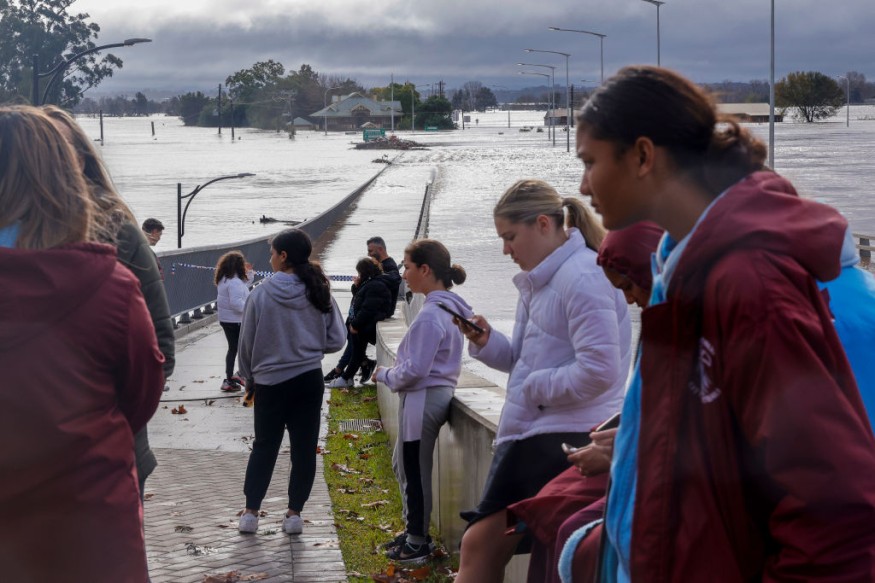Major flooding continues to threaten Sydney and areas across New South Wales, Australia, as torrential rain is expected to persist until Wednesday, July 6, according to the Bureau of Meteorology (BoM).
A new round of evacuation is still possible as dozens of thousands of NSW residents have been forced to leave their homes over the past week.
Approximately 50,000 residents have been told by local authorities to evacuate and leave their homes as of Tuesday, July 5.
The latest evacuee number has been at a 66.6% increase compared to the initial evacuation of 30,000 people in the region on Monday, July 4.
Other residents have been reportedly informed by the authorities to prepare for potential evacuation orders in the short-term future.
The threat comes from the risk of river overflow as water levels in some rivers have started to increase beyond their danger levels.
A so-called "east coast low" is causing the adverse weather that has besieged the state with heavy rain and flash flooding over the past week.
The BoM has started issuing major flood warnings and severe weather warnings since the weather disturbance started last Friday, July 1.
Australia is currently in its winter season, where its onset in June was marked by a winter storm of heavy snowfall and freezing temperatures.
The ongoing east coast low likely deviates from the said season but is more affected by the changing climate and the recent La Niña that gripped the region this year.
NSW Major Flooding

The BoM reminded citizens on Tuesday that several major flood warnings are still ongoing and could continue for some of the following NSW areas below:
- Hawkesbury-Nepean catchment
- Wollombi Brook
- Macquarie River
- Tuggerah Lake
- Paterson
- Cooks
- Georges
- Woronora
- Macquarie
- Shoalhaven
- St. Georges Basin
Other risks posed by the inclement weather are landslips and riverine flooding, which continues for many parts of the state.
Also Read: New South Wales Announces Another Evacuation Warning to Residents Due to the Extreme Flooding
Evacuations Orders
Flooding and rainfall in general have subsided across the region compared to previous days. Still, the tens of thousands of NSW residents are still displaced due to the ongoing threat.
A total of 85,000 people, including Sydney residents, are currently under evacuation orders and evacuation warnings as of Wednesday morning, according to The Sydney Morning Herald.
In response, Australian Prime Minister Anthony Albanese has vowed to coordinate with all levels of government to address the developing NSW flood crisis, as cited by the Australian media agency.
PM Albanese and NSW premier Dominic Perrottet on Wednesday visited Windsor and its surrounding areas
Climate Drivers
In a separate yet related report, the BoM issued its assessment of the heavy rainfall in eastern NSW by identifying key climate drivers behind the above-average rainfall in the region.
The Australian weather agency said that it is not attributing the current weather event to the 2021 to 2022 La Niña season, which it had declared to have ended already.
Rather, the agency points toward the Indian Ocean Dipole (IOD), which pertains to the varying sea surface temperatures between the western and eastern Indian Ocean.
In addition, the adverse weather is being caused by the so-called Southern Annular Mode (SAM), which depicts the movement of strong westerly winds in the higher latitudes of the southern hemisphere.
© 2025 NatureWorldNews.com All rights reserved. Do not reproduce without permission.





